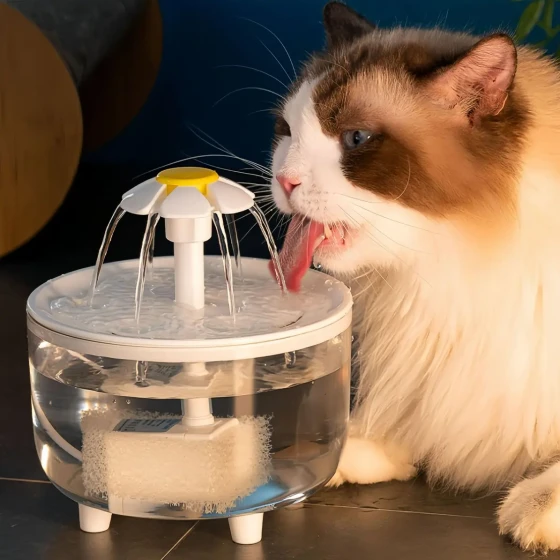Which is better, female orange cat or male orange cat (Differences + breeding choices)
The main physiological difference between female orange cats and male orange cats lies in their reproductive organs. Besides that, there may be some differences in personality, health, and breeding costs, but these differences are not absolute, as individual variation is often greater.

1. What are the differences between female and male orange cats?
- Physiological structure: The most obvious difference is the reproductive organs. Female cats have a uterus and ovaries; male cats have testicles.
- Body size: Generally, male orange cats may be slightly larger and have sturdier bones than female orange cats. However, this is not absolute; there are large female orange cats and small male orange cats.
- Estrus cycle: Female cats enter estrus after sexual maturity, showing behaviors such as calling for mates and restlessness. Male cats do not have a regular estrus cycle but may exhibit behavioral changes influenced by the scent of females in heat.
2. What are the personality differences?
Personality differences are often a concern, but it is important to emphasize that a cat's personality is influenced by genetics, environment, early socialization, and other factors, and gender is not a decisive factor. However, based on observations and experience, some general tendencies may exist:
- Male orange cats: Usually considered more outgoing, lively, playful, affectionate, and may be bolder and more curious. They might enjoy exploring the surroundings and interacting more with their owners. Some males may show stronger territorial behavior.
- Female orange cats: Generally more independent, quieter, and gentler. They may prefer solitude but also form deep bonds with their owners. Some female cats are more cautious and sensitive. During estrus, females may become very clingy.
It should be noted these are general tendencies, and every cat’s personality is unique. Some female orange cats may be very active, while some male orange cats may be quiet and introverted.
3. Which is more suitable for family care?
There is no absolute answer; it depends on your personal preference and family situation:
- If you like lively, active cats that enjoy interacting and playing, and can accept a male cat's potentially stronger territorial instincts and spraying behavior (if not neutered), then a male orange cat may be more suitable for you.
- If you prefer a relatively quiet, independent cat and can accept the calling and behavioral changes during a female cat’s heat (if not spayed), then a female orange cat may be better for you.
Regardless of which gender of orange cat you choose, it requires the owner’s sufficient love, companionship, and proper training. Neutering is an effective method to avoid estrus-related troubles and some health issues and is generally recommended for family pets.
4. Are there health differences?
Health-wise, male and female orange cats may face some gender-related specific health risks:
- Male orange cats: Non-neutered males are more prone to testicular diseases such as testicular tumors. Also, males have relatively narrower urethras, making urinary tract blockage more likely.
- Female orange cats: Non-spayed females are more susceptible to uterine and ovarian diseases like pyometra, ovarian cysts, and mammary tumors. Pregnancy and delivery also carry health risks for females.
Neutering can significantly reduce these gender-related health risks.
5. How significant is neutering’s impact?
Neutering has a major, mostly positive, impact on both male and female orange cats:
- Behavioral aspects:
- Male cats: Neutering greatly reduces or eliminates spraying behavior, decreases fighting over territory, and makes temperament gentler.
- Female cats: Neutering completely eliminates estrus behaviors such as calling and irritability, and prevents unwanted pregnancies.
- Health aspects:
- Male cats: Reduces risks of testicular tumors, prostate diseases, etc.
- Female cats: Lowers risks of pyometra, ovarian cysts, mammary tumors, and other conditions.
- Lifespan: Studies show neutered cats tend to live longer than unneutered cats, mainly because of reduced risks associated with estrus, fighting, and pregnancy.
Neutering surgery is generally safe and low risk, offering great benefits for cats’ overall health and quality of life.
6. Are there differences in care costs?
In daily care, the cost difference between male and female orange cats is small, including food, litter, toys, and healthcare.
The main differences may be:
- Neutering costs: Generally, spaying female cats (ovariohysterectomy) is slightly more complex and thus may cost a bit more than neutering males (orchiectomy).
- Pregnancy and delivery: If keeping an unspayed female, pregnancy and delivery can bring extra costs such as prenatal nutrition, checkups, and delivery medical fees.
Overall, after neutering, the care cost difference between male and female orange cats is minimal.
7. How to choose gender based on your needs?
You can consider the following when choosing male or female orange cats:
- Can you accept the behaviors during estrus? If not, it is recommended to choose neutered cats or neuter them at a young age.
- Do you prefer lively and clingy or relatively independent and quiet cats? Refer to the personality tendencies mentioned but be prepared for individual differences.
- Are you concerned about territorial instincts and spraying? If so, picking males and neutering early is advised.
- Is your home environment suitable for multiple cats? If yes, consider the interaction between different genders.
The most important thing is to choose a cat you truly like and can responsibly care for, regardless of its gender.
8. Is orange cat gender related to coat color traits?
The orange coat color (including orange, cream, etc.) gene is closely related to gender. The orange gene is located on the X chromosome.
- Male cats: Since males have only one X chromosome (XY), if that chromosome carries the orange gene, the cat will be orange. Therefore, orange male cats are relatively common.
- Female cats: Females have two X chromosomes (XX), so they need both to carry the orange gene to be solid orange. If one X carries orange and the other carries black or other non-orange genes, they usually show tortoiseshell (orange mixed with black or other colors) or calico (orange, black, and white mix) patterns. Hence, solid orange females are less common than solid orange males.
In summary, orange coat color is a sex-linked genetic trait, so the gender of orange cats is related to coat color features.
9. Is mixing male and female orange cats suitable for multi-cat households?
Whether a multi-cat household can mix male and female orange cats depends on individual personalities, age, socialization, and owner management.
- Advantages:
- If cats get along, males and females may establish good relationships, accompany and play with each other.
- If all are neutered, conflicts due to estrus or mating competition can be avoided.
- Disadvantages:
- Personality clashes may occur even among same-gender cats.
- Unneutered males may chase females in heat, causing stress for females.
- New cats may be rejected by resident cats without proper introduction and guidance.
Suggestions:
- Early neutering: Whether male or female, neutering at an appropriate age is recommended to reduce hormone-related issues.
- Slow introduction: When adding a new orange cat to a multi-cat home, introduce gradually to let them adapt to each other’s scent and presence.
- Provide enough resources: Ensure each cat has its own food and water bowls, litter boxes, resting spaces, and toys to prevent resource conflicts.
- Observe cat behavior: Closely monitor interactions; intervene and seek professional help if hostility appears.
- Consider individual personalities: Learn about cats’ temperaments when choosing, preferring mild and sociable cats.
Overall, with proper preparation and management, multi-cat households can mix male and female orange cats. However, individual differences are significant and cannot be generalized.





